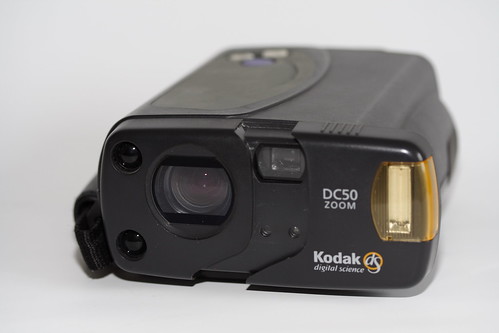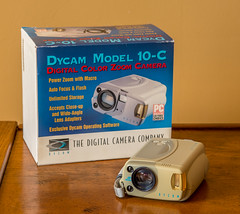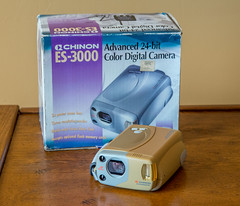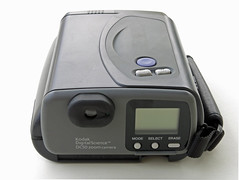Difference between revisions of "Kodak DC50 Zoom"
(power and LCD) |
m |
||
| Line 3: | Line 3: | ||
|image= http://farm1.static.flickr.com/216/488884651_3cc206224c.jpg | |image= http://farm1.static.flickr.com/216/488884651_3cc206224c.jpg | ||
|image_align= right | |image_align= right | ||
| − | |image_text= Early digital camera from [[Kodak]], styled somewhat like a | + | |image_text= Early digital camera from [[Kodak]], styled somewhat like a pair of binoculars |
|image_by=Ingo Kwiat | |image_by=Ingo Kwiat | ||
|image_rights=nc | |image_rights=nc | ||
Revision as of 13:06, 8 April 2014

|
| Early digital camera from Kodak, styled somewhat like a pair of binoculars image by Ingo Kwiat (Image rights) |
The DC50 is a early digital camera released by Kodak in 1996. The same camera was available as the Dycam Model 10-C as well as the Chinon ES-3000.
The front of the camera has a sliding viewfinder cover that also operates as the power switch. The camera does go to sleep if inactive for 1, 2 or 4 minutes depending on settings. The LCD panel on the back displays information such as auto focus point, exposure compensation, flash (auto, on, off), picture quality, self-timer, erase status, card status, copy status, exposure counter, exposure remaining, and battery level.
Gallery

|
| Dycam 10-C image by maoby (Image rights) |

|
| Chinon ES-3000 image by maoby (Image rights) |

|
| back view image by jefg99 (Image rights) |
Specifications
- Type: Digital compact camera
- Manufacturer: Kodak
- Year of launch: 1996
- Sensor: 756×504 pixel 24bit color CCD
- Lens: 7 to 21 mm zoom lens
- Exposure: programmed automatic exposure with shutter speeds 1/16 to 1/500 sec.
- Focusing: infrared autofocus
- Flash: built-in, guide number 10.4
- Display: black & white LCD control panel, almost alike that of compact cameras for film
- Image memory: PCMCIA-ATA removable memory card Type I and II
- Interface: RS232C/RS422 serial connector, 115 Kbit/sec.
- Dimensions: 152×119×64 mm
- Power: 4 AA batteries or AC power supply
- Weight: 525 g without batteries
Links
- manual at Kodak
- DC50 Zoom at Kurt Tauber's Kamera Museum - in German